Outdoor territory, as well as the country and garden plot constantly need improvement and gardening. To do this, in various places you can position street vases with plants planted in them - with their help you can successfully place accents in the form of bright plugs from flower arrangements, giving a harmonious view of the railway area.
Content
Varieties of street vases
Currently, decorative mini-beds, harmoniously fitting in landscape design, are very popular. Planting and growing plants in street vases, you can pick up a suitable soil composition separately for each group of plants, as well as optimal conditions - depending on the needs, vases can be placed in well-lit or shaded places. Mixed and complex, stationary and portable street vases, on spacers, as well as suspended - select the manufacturing material, shape, coloring and texture of such products, with regard to the overall style of the landscape design of the territory on which you plan to place it, taking into account the principles of combination .
Stationary decorative vases look successfully as accents along the tracks and paths, on the terraces, near the porch of the house. With the help of suspended street vases for flowers, you can decorate gazebos, garden pergolas, as well as decorate the walls. In addition, plants placed among plants lined in open soils, flowers with flowers will look quite harmonious, complementing and decorating the overall picture. For permanent accommodation in the garden, stationary options with various decorative compositions will be suitable, which will lead the landscape long. Small portable flowered floors with blooming plants - the so-called mobile flowerbeds can be fluent in a suitable place, if necessary, it is easy to replace them.
When choosing vases, it is necessary to measure their size with the scale of the site - on a long alley, small pots are simply lost, and large containers may not fit in conditions of a small dacha area, as they will look cumbersome and break the harmony of space. The suitable size can be organically fitted into the landscape, not too distinguished (located in sight, but not in the spotlight) and acting as a suitable framing for different plants lined in it. Vases are often placed on the edges of stairs, garden tracks and alleys. In addition, they can be placed on any part of the plant composition, including in the central part.
As for coloring, products of monochromatic white, beige, terracotta and brown tones are widely used, as well as tender pastel shades - they successfully appline juicy greens and flowering plants. Do not pick up vases too bright colors, as they will drag attention from the flower arrangement on themselves.
Street Vase Production Materials
For the manufacture of these products, both natural and artificial materials can be used - stone, clay, metal, as well as plastic and concrete.
Depending on the material of the manufacture, street vases differ in the following characteristics:
- clay - due to the high plasticity of this material, you can make vases of various forms, as well as textures. The burned clay (terracotta) is a natural material, characterized by high porosity - consequently, the root system of plants in the vase is actively enriched through the soil with oxygen. If the product is covered with a special icing, then it loses its porosity;
- stone - Street vases from this material are piece products on which various volumetric ornaments can be avoided. The process of their manufacture is quite laborious, therefore the stone vases are quite expensive. Their advantages include high decorativeness, strength and durability. In addition, the stone moistureproof and high quality holds moisture in the soil of the vase;
- wooden - such vases are made of natural wood, impregnated with antiseptic, and organically fit into any landscape design. These products can be lacquered, as well as color. Wooden vases are perfectly held by moisture and therefore are suitable for moisture-loving plants;
- metal - on sale presented solid monumental products from cast iron or wrought iron vases from brass, as well as steel and zinc containers of clear geometric shapes in minimalist style. These materials are subject to corrosion, so they are usually painted. In addition, metal vases are quickly heated, so they should not be left for a long time under the scorching sun without watering, otherwise the roots of plants planted in them can "burn" from the heat;
- concrete - in their characteristics resemble products from stone, but they are much cheaper. In hot summer, the ability of street vases from concrete is particularly relevant to maintain moisture in the ground. Due to the low thermal conductivity of this material, the root system of the plant will not overheat sharply and transfer. Vases made from a mixture of concrete and stone crumbs look thoroughly and solid, as a result of its massiveness, they will fit mainly for the plots of a fairly large area;
- plastic - they produce a wide variety of forms and colors. In the frost-resistant street pots of plastic you can plant perennial plants, wintering in the fresh air - such products can withstand the temperature from +50 to -40 °.
Production of street vases with their own hands
The sale presents a wide selection of street vases from the above materials corresponding to modern trends in landscape design and in various price categories. Usually they are made of moisture-resistant and frost-resistant materials that carry out various weather conditions. In addition, suitable vases for street plants can be made independently - this will not require significant cash costs, as well as the availability of special skills. Thus, you can create original products with your own hands, which will be decorating a plot, harmoniously combined with the existing style of landscape design, located on the plot of buildings, as well as green plantings.
Vases from submitted items
You can independently be made of vases literally from girlfriend - wooden boxes, gardening, automotive tires, old canisters, barrels, jugs, tackle and carts. Such a garden decor looks very creative and make a plot unique and memorable. Vases can be painted in various tones, wood to increase durability It is recommended to cover with antiseptic impregnation or varnish. Lovely look woven from the vine or wire baskets, as well as old dishes (abded clay bowls and jugs, buckets and pans), fitted under plantation of plants. Old plates after heating become plastic, therefore, of them it is easy to modify the vases of the desired form (try not to burn it). With the help of several vases made by their own, you can compose various floral compositions.
Opportunities for decorating vases are limited only by your fantasy - you can use small pebbles, pebbles, shells, etc. In addition, it is possible to separate vases with a mosaic coating - with the help of broken stained glass, faience fragments and porcelain (they are fixed with tiled glue).
Pump and cut trees
The stump or the woody drink is sufficient thickness is easy to convert to flower vase. To do this, you will need a drill and a chisel.
It is necessary to drill holes at a small distance from each other and gradually remove wood from the stump using the chisels to get the opening of the desired depth. The prepared deepening in the stump falls asleep the earth and plant plants into it.
It is very decorative and creatively a spoken tree with flowers planted in it. To do this, in it, as for the stump, prepare a deepening. It is placed in a pot or other suitable container with planted plants. Filling the ground directly the hole of the stump is not worth it, since the wood is very susceptible to moisture, and as a result of watering, the plants will begin to refine. To avoid wetting and subsequent deterioration, it is recommended to treat the tree with a special protective impregnation.
Tire Vasons
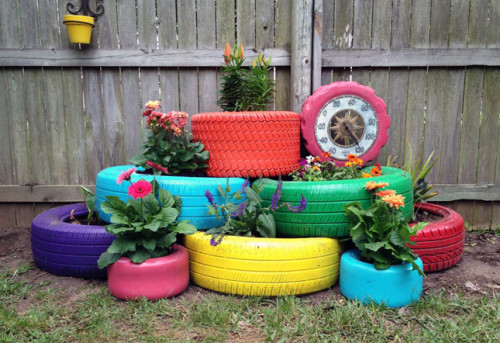
Many seen vases from tires placed on urban flower beds. A similar decor for the local area of \u200b\u200bthe country house or the country area is easy to do. To do this, you will need old car tires (they are easy to get in tire workshops), as well as about half an hour of free time. With the help of a well-sharpened knife, either the electric bike will need to cut the petals of the vase (the recommended ornament width is at least 10 cm), and then turn the tire inside out. Further, it is possible to add decorative cuts on the perimeter, giving a rubber plots the shape of triangles, rectangles, semi-lines, petals.
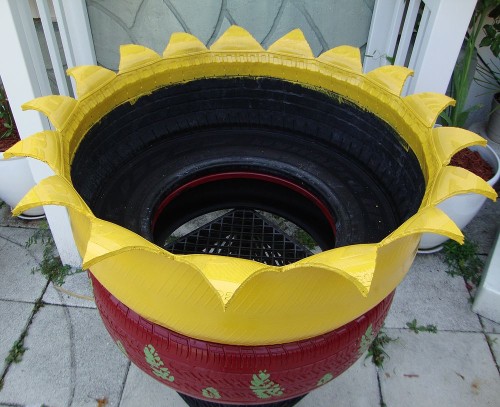
After that, it remains to paint the product to suitable color, as well as if you wish, apply a decorative pattern. After drying, the paint on the bottom of the vase is placed a special nonwoven agricultural sheet that transmits moisture and ensures drainage, and then fill it with the ground.
Basons made of concrete
Concrete street vases are very convenient in operation and in their properties there are little more inferior to products from stone.
To make such a street vase with their own hands, you will need:
- cement-sand mix;
- sunflower oil;
- two close-up containers - a large one will appear as a form for the product, with the help of the second one can form the walls of the vase;
- plastic tube sliced \u200b\u200bby several pieces of about 5 cm long.
Sequencing:
- First you need to prepare a cement solution. Mix in a suitable capacity of cement and sand in a 2: 3 proportion, add water, as well as (if necessary) dye.
- Treat the working surfaces of the forms to be treated with vegetable oil to be in contact with cement.
- Load a layer of cement mortar to a large form with a thickness of about 2 cm. Insert several pieces of the plastic tube into it for the formation of drainage holes and felt the setting of the concrete solution.
- Then place a smaller container inside more so that it covers drainage tubes, and fill the cement mixture.
- After pouring the solution (about a day), it should be carefully removed with a smaller form of greater support.
- Next, it is necessary to clean the cement with water from the pulverizer, wrap the design into the film and leave for frozen during the week, periodically moistening the future water vase.
- After time, choose the product from the form. Vazon is ready, it remains to fill it with the earth and plant plants.

Kashpo do it yourself
At home, it is also possible to make caspets - decorative vase, the design of which does not provide drainage. A pot with plants will be prevented into it, or you can land them directly in Cachepie (it will be necessary to organize drainage). As a basis for such a homemade vase, you can use any existing capacity of the suitable form. From above, it is applied with a layer of clay, plaster or asbestos with a thickness of at least 2 cm. The ass, used as the basis, is wrapped with a gauze bandage - it must be predetermined in the gypsum, divorced before the creamy consistency. After the material is frozen (after 12 hours), the product needs to be cleaned with the sandpaper. After that, you can proceed to the decoration of the vase - for example, to paint with acrylic paints and to cover with varnish.
It should be borne in mind that the size of plants and tanks in which they are planned to plant, must fit together. For suspended products, curly ampellast plants are suitable, which, as they grow beautifully beyond the vases. In the tanks located at the ground level or at a low height, the soil and lowered plants can be planted - beautifully blooming and decorative and deciduous perennials.
Successfully selected floral arrangements planted in street vases and distributed on the territory will shake the vegetation and buildings available on it, acting as a raisin in the surrounding landscape.
Street vases - Photo
Production of street vases - video




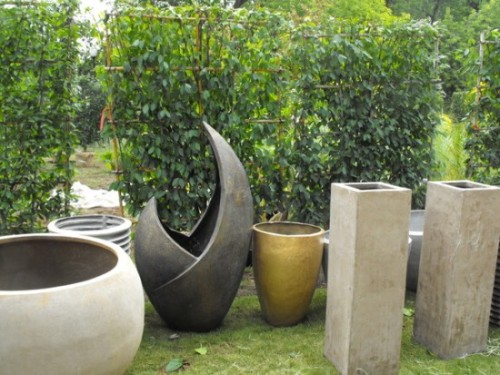


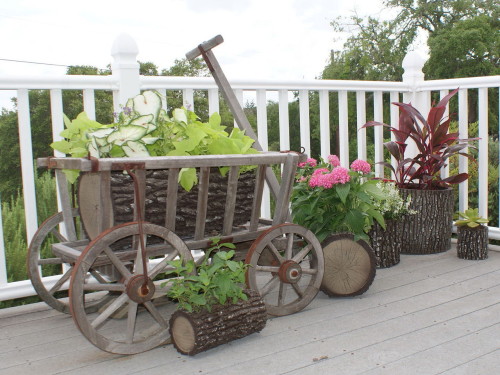


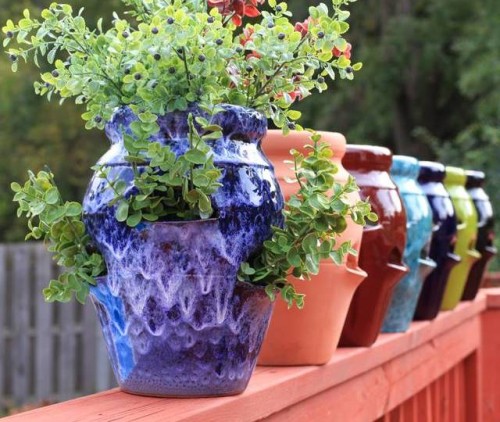
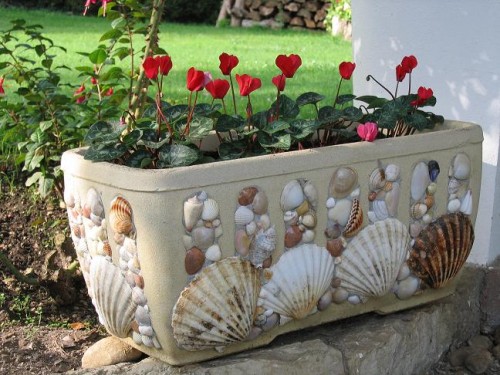
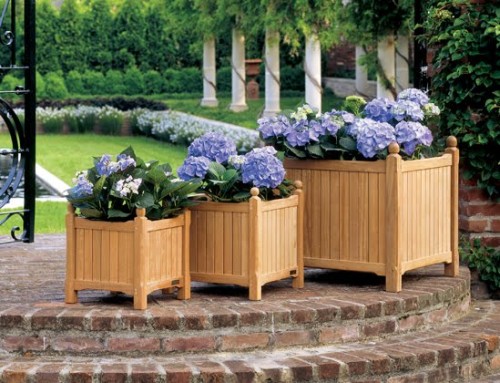
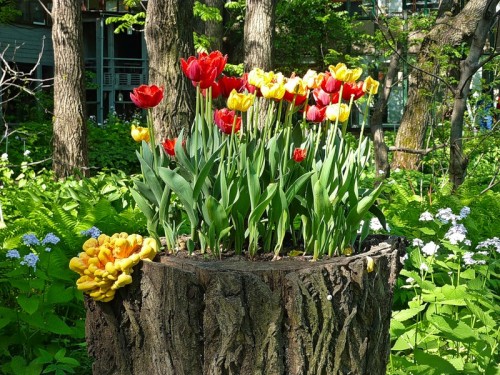


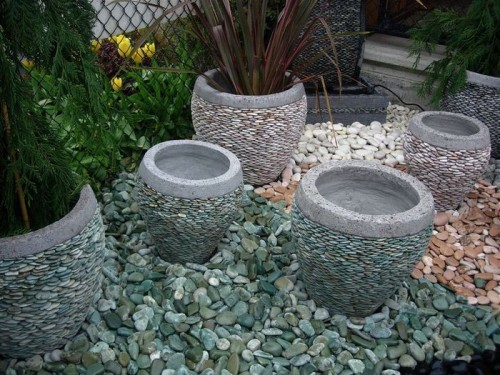
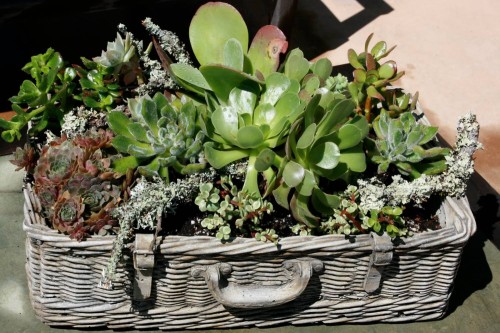


















full crap